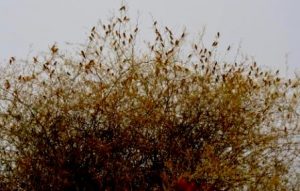Bhubaneswar: The Odisha Chapter of the Indian Bird Conservation Network (IBCN) and Wild Orissa have undertaken the annual census of weaver birds in the state.
“The census, which began on June 1, will continue till June 30,” IBCN state coordinator and secretary, Wild Orissa, Monalisa Bhujabal told Odishabytes.
She said the census is being carried out in the districts of Khurda, Puri, Cuttack, Jagatsingpur, Kendrapada, Keonjhar, Dhenkanal, Mayurbhanj, Balasore, Bhadrak, Jajpur, Ganjam, Gajapati, Sundargarh and Sambalpur by volunteers from Wild Orissa, IBCN Odisha Chapter, Bird Lovers, Sri Sri Mahavir Pakhsi Surakshya Samiti of Mangalajodi, Bird Protection Committees, Vana Surakshya Samitis, Black Buck Conservation Committee, Rushikulya Sea Turtle Protection Committee, communities in villages, children from some rural schools and college students.
“Apart from this, we have requested the authorities of the North Odisha University, Utkal University, Odisha University for Agriculture & Technology (OUAT) and the Central University Koraput to participate in the census,” Monalisa said, adding that this the fourth weaver bird census being carried out in Odisha since 2016.

The bird count will be visually carried out by volunteers, who will note down the details regarding the particular site, the number of birds and their nests, the tree/plant species on which nests are built and other interesting facts.
Referring to the number of weaver birds in Odisha, Monalisa said the number of these endangered species was 9,000 in 2016, but has gone up to 11,676 in 2018. “As per census data of the last three years, Odisha has the highest number of weaver birds in the country,” she said.
Weaver birds are highly social birds and known for their nest-weaving skills. Three species of weavers, belonging to the family Ploceidae are found in Odisha. They are Baya Weaver (Ploceus philippinus), Streaked Weaver (Ploceus Manyar) and Black-breasted Weaver or Black-throated Weaver (Ploceus benghalensis).
Among the three species of weaver birds, the Baya Weaver is the most familiar and common bird in the country. This species builds overhanging nests in colonies, usually above the water. Its food includes grains, seeds and small insects.
The breeding season of these birds is between April to August. The male weaver, which appears yellow during the breeding season, builds retort-shaped nests in colonies and continuously sings to attract female birds.
The Baya Weaver has a polygamous breeding system, as it mates with many female birds (not necessarily at the same time).
Urbanisation, agricultural practices, industrialization, development, human population, deforestation are the major threats to this species.
All Indian weaver bird species are protected and listed in Schedule IV of the Wildlife (Protection) Act, 1972.


